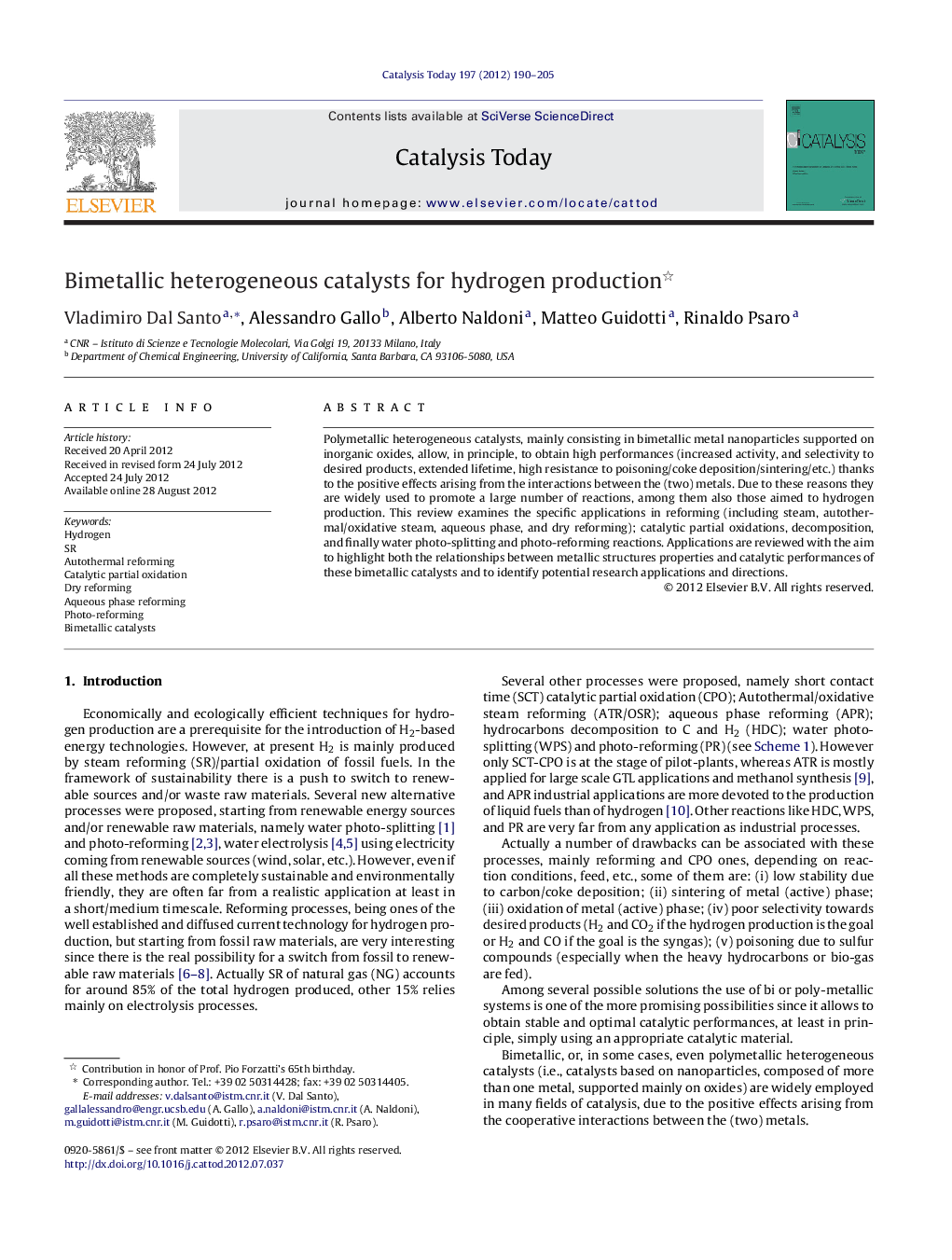| Article ID | Journal | Published Year | Pages | File Type |
|---|---|---|---|---|
| 55323 | Catalysis Today | 2012 | 16 Pages |
Polymetallic heterogeneous catalysts, mainly consisting in bimetallic metal nanoparticles supported on inorganic oxides, allow, in principle, to obtain high performances (increased activity, and selectivity to desired products, extended lifetime, high resistance to poisoning/coke deposition/sintering/etc.) thanks to the positive effects arising from the interactions between the (two) metals. Due to these reasons they are widely used to promote a large number of reactions, among them also those aimed to hydrogen production. This review examines the specific applications in reforming (including steam, autothermal/oxidative steam, aqueous phase, and dry reforming); catalytic partial oxidations, decomposition, and finally water photo-splitting and photo-reforming reactions. Applications are reviewed with the aim to highlight both the relationships between metallic structures properties and catalytic performances of these bimetallic catalysts and to identify potential research applications and directions.
Graphical abstractFigure optionsDownload full-size imageDownload high-quality image (167 K)Download as PowerPoint slideHighlights► Bimetallic heterogeneous catalysts for hydrogen production. ► Positive interactions between metals (cooperative, geometric, and electronic effects). ► Improved catalytic performances (activity, selectivity, and durability). ► Avoidance of drawbacks (carbon deposition, sintering, oxidation of active phase).
